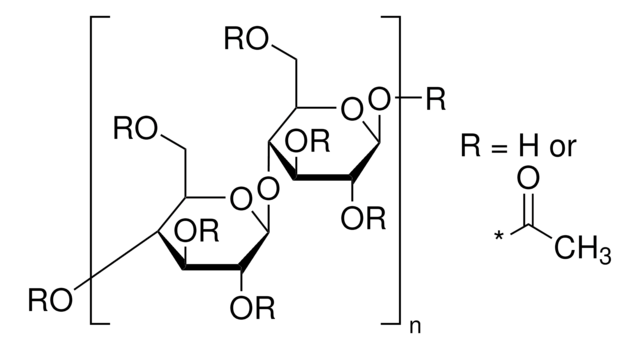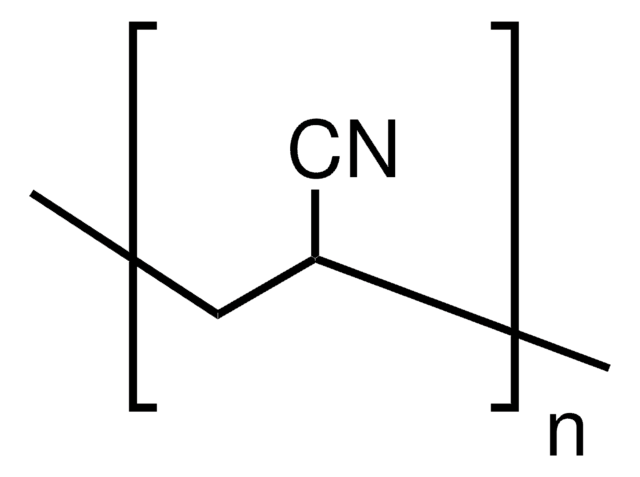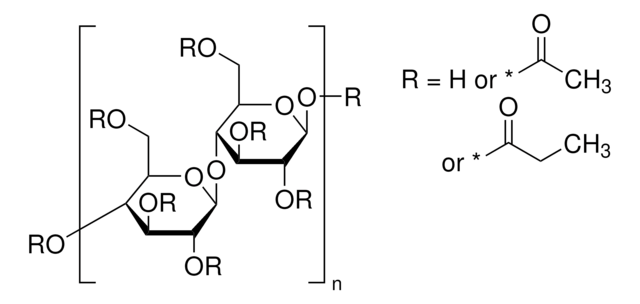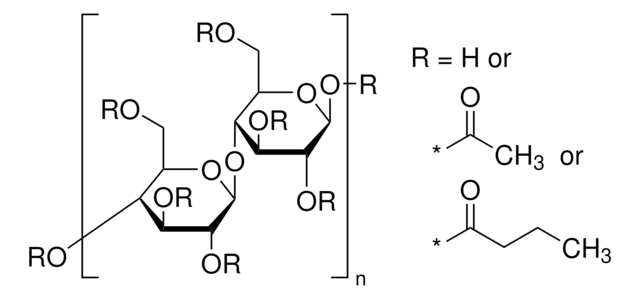Wszystkie zdjęcia(1)
Kluczowe dokumenty
22199
Cellulose triacetate
for ion-selective electrodes, Selectophore™
Synonim(y):
Triacetylcellulose
Zaloguj sięWyświetlanie cen organizacyjnych i kontraktowych
About This Item
Polecane produkty
klasa czystości
for ion-selective electrodes
Poziom jakości
linia produktu
Selectophore™
Formularz
granular
rozpuszczalność
chloroform: 0.1 g/10 mL, clear, colorless (leave for 5 h)
Szukasz podobnych produktów? Odwiedź Przewodnik dotyczący porównywania produktów
Informacje prawne
Selectophore is a trademark of Merck KGaA, Darmstadt, Germany
Ta strona może zawierać tekst przetłumaczony maszynowo.
Kod klasy składowania
11 - Combustible Solids
Klasa zagrożenia wodnego (WGK)
nwg
Temperatura zapłonu (°F)
Not applicable
Temperatura zapłonu (°C)
Not applicable
Środki ochrony indywidualnej
Eyeshields, Gloves, type N95 (US)
Wybierz jedną z najnowszych wersji:
Masz już ten produkt?
Dokumenty związane z niedawno zakupionymi produktami zostały zamieszczone w Bibliotece dokumentów.
Klienci oglądali również te produkty
Facilitated transport of small carbohydrates through plasticized cellulose triacetate membranes. Evidence for fixed-site jumping transport mechanism.
Riggs, Jennifer A., and Bradley D. Smith.
Journal of the American Chemical Society, 119, 2765-2766 (1997)
Fabrication and positron annihilation spectroscopy (PAS) characterization of cellulose triacetate membranes for forward osmosis.
Ong, Rui Chin, and Tai-Shung Chung
Journal of Membrane Science, 394, 230-240 (2012)
S. P. Mishra
A Text Book of Fibre Science and Technology, 187-187 (2000)
Masanori Abe et al.
Artificial organs, 35(4), 398-403 (2011-02-15)
Although it has been reported that plasma insulin is removed by hemodialysis (HD), the mechanism for this has not been elucidated. We investigated the mechanism of insulin removal during HD treatment and the characteristics of insulin removal with three high-flux
Yangshuo Gu et al.
Water research, 47(5), 1867-1874 (2013-02-07)
Fouling of cellulose triacetate (CTA) and thin-film composite (TFC) forward osmosis (FO) membranes by organic macromolecules were studied using oppositely charged lysozyme (LYS) and alginate (ALG) as model foulants. Flux performance and foulant deposition on membranes were systematically investigated for
Nasz zespół naukowców ma doświadczenie we wszystkich obszarach badań, w tym w naukach przyrodniczych, materiałoznawstwie, syntezie chemicznej, chromatografii, analityce i wielu innych dziedzinach.
Skontaktuj się z zespołem ds. pomocy technicznej








![PSS-[3-(2-Aminoethyl)amino]propyl-Heptaisobutyl substituted](/deepweb/assets/sigmaaldrich/product/structures/583/905/1ee2f0b3-2da3-49d4-af68-a0382b34aeff/640/1ee2f0b3-2da3-49d4-af68-a0382b34aeff.png)